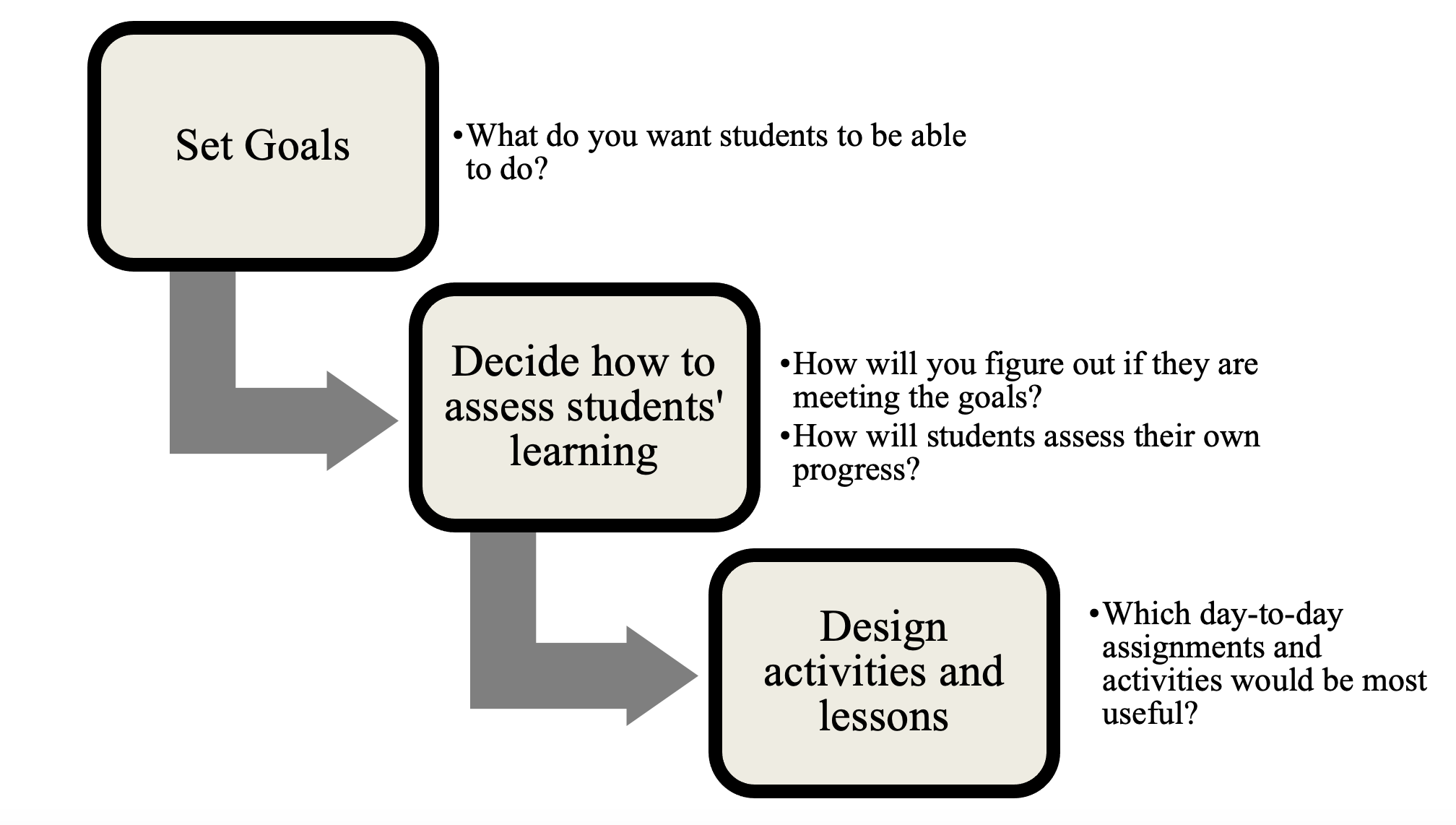Planning Sequences Using Backwards Design
The Model Syllabus for English 100 is built around three sequences, each with a particular set of learning goals (in addition to the overarching course goals related to drafting, revising, etc.)
Sequence 1 – A Narrative Approach to Concepts, Invention, and Inquiry
Sequence 2 – Writing to Inform
Sequence 3 – Developing an Approach through Research and Argumentation
A sequence is a planning structure in which each assignment, activity, and reading builds from the previous one and leads into the next, all moving toward common goals. Many of the goals for English 100 and for each of the three sequences are set in the common syllabus. Elsewhere in this guide, you can find model course calendars with samples of major assignments and options for day-to-day assignments and class activities. These goals, sample assignments, and activities offer a starting point for designing your own syllabus.
Backwards Design: A Method for Planning
Whether you’re new to teaching writing or a long-time composition instructor, one of the challenges you may face is how to streamline your planning process. A course planning method called “backwards design”1 may help you focus your planning, which will save time and help to ensure more coherent learning experiences for students.
Here’s how it works: First, identify the top goals for the course/sequence. Then, plot a path toward those goals, working backwards to find ways that will help students understand, become motivated about, and reach these goals—step-by-step. You may already be familiar with this strategy. We use it here as an organizing tool to explain how you might customize each of the three sequences in English 100 to make your course fit your style, teaching philosophy, personality, and expertise.

Planning a Sequence
The following three chapters model one way to design each of the three sequences in your course. The examples use best practices for creating a coherent, well-presented series of assignments and activities that build upon each other. The process appears in three parts:
- Designing the major assignment for a sequence
- Deciding how to choose activities, small assignments, readings, and in-class activities that will support what you want students to learn—while scaffolding (working on and working up) to the major project for the sequence.
- Planning individual lessons so that they achieve their goals well and fit into the overall sequence goals.
